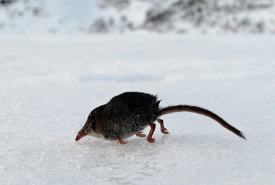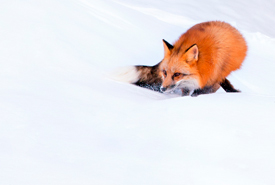Snow: A great winter ally

Shrew (Photo from Flickr)
To adapt to Quebec’s harsh winter conditions, plants and animals undergo considerable metamorphosis. This transition in the weather represents a great opportunity to discover little-known aspects of species living on the Nature Conservancy of Canada’s properties.
As a majestic white blanket falls over the countryside, various animal species find ever more ingenious ways to face the various hardships brought on by the change in weather. For many of them, snow becomes an important ally.
Shelter for shrews
Shrews are among the smallest mammals in the province. Their metabolism runs much faster than that most other small mammals. Because of this, they have to eat every two to three hours in order to survive.
To help them hunt in freezing weather conditions, shrews have developed tricks to adapt to snow and use it to their advantage. The tiny mammals crawl under the snow to hunt, using tunnels already dug by other species such as moles. This helps them find insects, which form a great part of their diet.
The thick layer of snow also provides the shrews with critical shelter against the wind and bad weather. Indeed, the snow not only provides these small mammals protection, but also functions as insulation against the low winter temperatures, keeping them warm.
What about predators?

Red fox (Photo by Alex Badyaev)
While shrews hunt beneath the sheltering snow, predators such as the red fox have evolved unique techniques to feed themselves despite the absence of prey on snowy surfaces.
Indeed, with its highly developed sense of smell and sharp hearing, the red fox can pinpoint the exact location of its prey crawling under the snow. When this happens, it leaps onto snow, burying its head to catch it (which occasionally makes for some funny scenes). In this case the snow helps the fox locate its prey without ever being seen, making it once again an invaluable ally in the species' survival.




